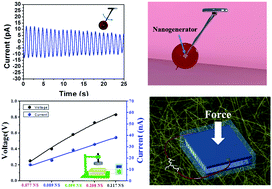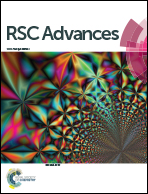Self-powered pendulum and micro-force active sensors based on a ZnS nanogenerator†
Abstract
We demonstrated a nanogenerator as a pendulum and micro-force active sensor which is first made from zinc sulfur (ZnS) nanowires. The ZnS nanowires were synthesized on an Si substrate by a carbonthermal evaporation process at 1050 °C. The length and diameter of the ZnS nanowires are around 20–50 μm and 50–100 nm, respectively. The X-ray diffraction (XRD) pattern shows that the ZnS has a wurtzite structure. The TEM image shows that the nanowires grew along the [0001] axis, which is in the spontaneous polarization direction. The ZnS nanowires can be packed into a nanogenerator either in-serial or in-parallel. Furthermore, on the basis of our theoretical calculations, which applied a compressive stress (1 × 106 N m−2) along the c-axis of ZnS nanowire, the corresponding output piezopotential can be reached of ∼2 V. Because the output voltage and current of the ZnS nanogenerator are proportional to the momentum, it can detect various momentums from 0.077 N s to 0.177 N s. The latter can also be self-powered to trace a simple harmonic motion of a pendulum that is released from different heights or angles. The same device can therefore be used for pendulum and micro-force active sensors without applying an external power source.


 Please wait while we load your content...
Please wait while we load your content...